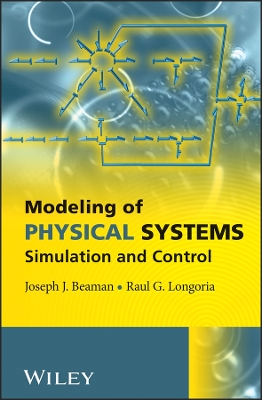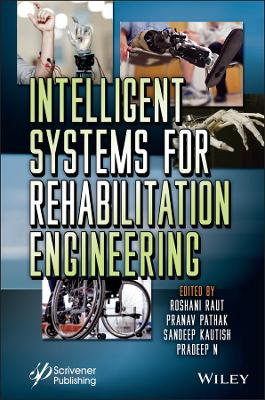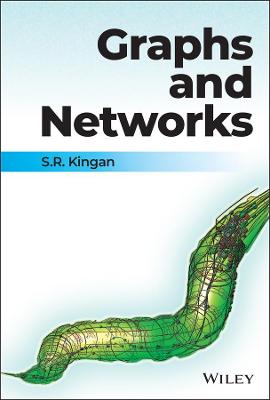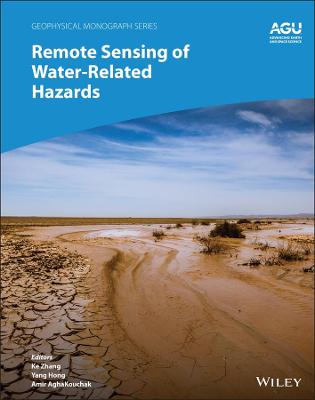Fundamentals of Public Safety Networks and Critical Communications Systems
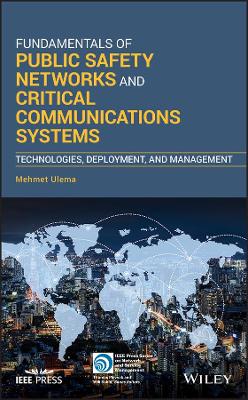 -15%
portes grátis
-15%
portes grátis
Fundamentals of Public Safety Networks and Critical Communications Systems
Technologies, Deployment, and Management
Ulema, Mehmet
John Wiley & Sons Inc
03/2019
320
Dura
Inglês
9781119369479
15 a 20 dias
494
Foreword by Hussein Mouftah xvii
Preface xix
Acknowledgments xxiii
List of Abbreviations xxv
About the Author xxxv
1 OVERVIEW 1
1.1 Background 1
1.2 Technologies Used in Critical Communications 4
1.2.1 Narrowband Land and Private Mobile Radio Systems 4
1.2.2 Broadband Technologies for Critical Communications 6
1.2.3 Interoperability 9
1.3 Applications, Systems, and End-User Devices 11
1.3.1 Applications and Systems 11
1.3.2 End-User Terminals and Consoles 13
1.4 Standards, Policies, and Spectrum 15
1.4.1 Frequency Spectrum for Critical Communications 15
1.4.2 Standards Development in Critical Communications 16
1.5 Planning, Design, Deployment, and Operational Aspects 18
1.5.1 Planning 18
1.5.2 Technology Considerations for a Critical Communications System 19
1.5.3 Economic and Financial Considerations 20
1.5.4 Paving the Way 21
1.5.5 Design and Deployment 22
1.5.6 Operations, Administration, Maintenance, and Provisioning (a.k.a. Management) 24
1.6 Summary and Conclusions 25
References 27
2 USERS OF CRITICAL COMMUNICATIONS SYSTEMS 33
2.1 Introduction 33
2.2 Organizations Involved in Public Safety 34
2.2.1 Police Departments 34
2.2.2 Fire Departments 35
2.2.3 Emergency Medical Services 36
2.2.4 Emergency Management Agencies 37
2.2.5 Coast Guard 37
2.2.6 Other Organizations in Public Safety 38
2.3 Other Sectors using Critical Communications Systems 39
2.3.1 Transportation 40
2.3.2 Utilities 40
2.3.3 Others 41
2.4 Summary and Conclusions 42
References 42
3 CHARACTERISTICS OF CRITICAL COMMUNICATIONS SYSTEMS 45
3.1 Introduction 45
3.2 Features Common to Both Critical Communications Systems and Other Wireless Networks 47
3.3 Features Unique to Critical Communications Systems 50
3.4 Importance of Interoperability Features 52
3.5 Summary and Conclusions 53
References 54
4 INTRODUCTION TO TECHNOLOGIES AND STANDARDS FOR CRITICAL COMMUNICATIONS 55
4.1 Introduction 55
4.2 Analog Systems-Historical Perspective 58
4.3 Narrowband Land and Private Mobile Radio Systems 59
4.4 Limitations of Narrowband PMR/LMR Systems 60
4.5 Broadband Technologies 60
4.6 Other Technologies 61
4.7 Summary and Conclusions 63
References 63
5 PROJECT 25 (P25) 65
5.1 Introduction 65
5.2 Architecture 68
5.3 Interfaces 71
5.3.1 Air Interfaces 72
5.3.2 Wireline Interfaces 73
5.3.3 Data Interfaces 74
5.3.4 Security Interfaces 75
5.4 Services 75
5.5 Operations 76
5.6 Security 77
5.7 RF Spectrum 77
5.8 Standardization 78
5.9 Deployment 80
5.10 Future 81
5.11 Summary and Conclusions 84
References 85
6 TERRESTRIAL TRUNKED RADIO (TETRA) 87
6.1 Introduction 87
6.2 Architecture 88
6.3 Interfaces 90
6.3.1 Air Interfaces 90
6.3.2 Intersystem Interface 92
6.3.3 Terminal Equipment Interface (TEI) 93
6.3.4 Line Station (Dispatcher) Interface 94
6.3.5 Network Management Interface 94
6.3.6 PSTN/ISDN/PDN 94
6.4 Services 95
6.4.1 Basic Voice Services 95
6.4.2 Supplementary Services 96
6.4.3 Data Services 97
6.5 Operations 97
6.6 Security 98
6.7 Spectrum 98
6.8 Standardization 99
6.9 Deployment 100
6.9.1 Cost Factors Impacting TETRA Wireless Systems 100
6.10 Future 104
6.11 Summary and Conclusions 105
References 105
7 DIGITAL MOBILE RADIO (DMR) 107
7.1 Introduction 107
7.2 Architecture 109
7.3 Interfaces 111
7.3.1 DMR Air Interface (AI) 112
7.3.2 Trunking Interface 113
7.3.3 Data Application Interface 113
7.4 Services 113
7.4.1 Voice Services 114
7.4.2 Data Services 115
7.5 Operations 116
7.6 Security 116
7.7 Spectrum 117
7.8 Standardization 117
7.9 Deployment 118
7.10 Future 119
7.11 Summary and Conclusions 119
References 120
8 LONG-TERM EVOLUTION (LTE) 121
8.1 Introduction 122
8.2 Architecture 125
8.2.1 E-UTRAN 125
8.2.2 Evolved Packet Core (EPC) 127
8.3 Interfaces 128
8.3.1 Air Interface 129
8.3.2 E-UTRAN Network Interfaces 129
8.3.3 EPC Interfaces 130
8.3.4 Interworking Interfaces 131
8.4 Services 132
8.5 Operations 133
8.6 Security 134
8.7 Spectrum 135
8.8 Standardization 136
8.9 Future 138
8.10 Deployment 138
8.11 Use of LTE as a Critical Communications Network 139
8.12 Summary and Conclusions 142
References 143
9 FUTURE TECHNOLOGIES FOR CRITICAL COMMUNICATIONS SYSTEMS 145
9.1 Introduction 145
9.2 5G and Beyond 146
9.3 Augmented Reality (AR) 150
9.4 Internet of Things (IoT) 151
9.5 Big Data Analytics 152
9.6 Summary and Conclusions 153
References 154
10 SYSTEMS AND APPLICATIONS USED IN CRITICAL COMMUNICATIONS 157
10.1 Introduction 157
10.2 Command and Control Centers 158
10.3 Emergency Response Systems 158
10.4 Incident Management System 160
10.5 Public Warning Systems 161
10.6 Others 162
10.7 Summary and Conclusions 163
References 163
11 END-USER DEVICES CONNECTED TO CRITICAL COMMUNICATIONS SYSTEMS 165
11.1 Introduction 165
11.2 Mobile Radios 166
11.3 Portable Radios 167
11.4 Dispatch Consoles 170
11.5 Others 171
11.6 Summary and Conclusions 172
References 172
12 PLANNING FOR DEPLOYMENT AND OPERATIONS OF CRITICAL COMMUNICATIONS SYSTEMS 175
12.1 Introduction 175
12.2 Developing Policies 176
12.2.1 National Broadband Policy 177
12.2.2 Governance Policy 177
12.2.3 Spectrum Management Policy 178
12.3 Developing a Business Case 180
12.3.1 Identifying Alternatives 181
12.3.2 Feasibility Studies 184
12.3.3 Interoperability Concerns 185
12.3.4 Comparison of Alternatives and the Recommendation 188
12.4 Developing Project Plans 190
12.5 Summary and Conclusions 192
References 193
13 ECONOMIC AND FINANCIAL CONSIDERATIONS FOR DEPLOYING CRITICAL COMMUNICATIONS SYSTEMS 195
13.1 Introduction 195
13.2 Cost and Benefit of Deploying and Operating a Public Safety Network 196
13.2.1 Cost of Deploying and Operating a Public Safety Network 196
13.2.2 Benefits of Deploying and Operating a Public Safety Network 198
13.3 Financing Alternatives 199
13.3.1 Bond Financing 199
13.3.2 Lease Financing 200
13.3.3 Financing via Sharing the Network 200
13.4 Evaluation of Financing Alternatives 201
13.5 Summary and Conclusions 202
References 203
14 DESIGNING, IMPLEMENTATION, AND INTEGRATION 205
14.1 Introduction 205
14.2 Network Architecture and Design 205
14.2.1 Designing Narrowband Technologies Based Network 206
14.2.2 Designing a Broadband Technology Based Network 208
14.3 Implementation and Installation 213
14.4 System Integration, Verification, and Validation Testing 214
14.5 Summary and Conclusions 215
References 215
15 OPERATIONS, ADMINISTRATION, AND MAINTENANCE OF CRITICAL COMMUNICATIONS SYSTEMS 217
15.1 Introduction 217
15.2 Developing Operations Plans 220
15.3 Operation Support Systems (OSSs), Tools, and Applications 221
15.3.1 Many Types of OSSs: Layered Organization 222
15.3.2 Interfaces among OSSs 223
15.3.3 OSSs Supporting Network Management Functions 223
15.3.4 Tools and Applications Supporting Operations 224
15.3.5 OSSs Supporting Network Technologies 225
15.4 Operations Support Centers, Policies, Guidelines, and Procedures 226
15.4.1 Centers, People, Administration 228
15.4.2 Configuration Management Related Procedures 230
15.4.3 Fault Management Related Procedures 232
15.4.4 Performance Management Related Procedures 233
15.4.5 Accounting Management Related Procedures 234
15.4.6 Security Management Related Procedures 235
15.5 Summary and Conclusions 236
References 237
16 SUMMARY AND CONCLUSIONS 239
16.1 Major Points and Observations 239
16.2 Challenges in Deploying Critical Communications Systems 241
A PROJECT 25 DOCUMENTS 243
B TETRA DOCUMENTS BY ETSI 249
C LTE CRITICAL COMMUNICATIONS RELATED DOCUMENTS 265
Index 273
Foreword by Hussein Mouftah xvii
Preface xix
Acknowledgments xxiii
List of Abbreviations xxv
About the Author xxxv
1 OVERVIEW 1
1.1 Background 1
1.2 Technologies Used in Critical Communications 4
1.2.1 Narrowband Land and Private Mobile Radio Systems 4
1.2.2 Broadband Technologies for Critical Communications 6
1.2.3 Interoperability 9
1.3 Applications, Systems, and End-User Devices 11
1.3.1 Applications and Systems 11
1.3.2 End-User Terminals and Consoles 13
1.4 Standards, Policies, and Spectrum 15
1.4.1 Frequency Spectrum for Critical Communications 15
1.4.2 Standards Development in Critical Communications 16
1.5 Planning, Design, Deployment, and Operational Aspects 18
1.5.1 Planning 18
1.5.2 Technology Considerations for a Critical Communications System 19
1.5.3 Economic and Financial Considerations 20
1.5.4 Paving the Way 21
1.5.5 Design and Deployment 22
1.5.6 Operations, Administration, Maintenance, and Provisioning (a.k.a. Management) 24
1.6 Summary and Conclusions 25
References 27
2 USERS OF CRITICAL COMMUNICATIONS SYSTEMS 33
2.1 Introduction 33
2.2 Organizations Involved in Public Safety 34
2.2.1 Police Departments 34
2.2.2 Fire Departments 35
2.2.3 Emergency Medical Services 36
2.2.4 Emergency Management Agencies 37
2.2.5 Coast Guard 37
2.2.6 Other Organizations in Public Safety 38
2.3 Other Sectors using Critical Communications Systems 39
2.3.1 Transportation 40
2.3.2 Utilities 40
2.3.3 Others 41
2.4 Summary and Conclusions 42
References 42
3 CHARACTERISTICS OF CRITICAL COMMUNICATIONS SYSTEMS 45
3.1 Introduction 45
3.2 Features Common to Both Critical Communications Systems and Other Wireless Networks 47
3.3 Features Unique to Critical Communications Systems 50
3.4 Importance of Interoperability Features 52
3.5 Summary and Conclusions 53
References 54
4 INTRODUCTION TO TECHNOLOGIES AND STANDARDS FOR CRITICAL COMMUNICATIONS 55
4.1 Introduction 55
4.2 Analog Systems-Historical Perspective 58
4.3 Narrowband Land and Private Mobile Radio Systems 59
4.4 Limitations of Narrowband PMR/LMR Systems 60
4.5 Broadband Technologies 60
4.6 Other Technologies 61
4.7 Summary and Conclusions 63
References 63
5 PROJECT 25 (P25) 65
5.1 Introduction 65
5.2 Architecture 68
5.3 Interfaces 71
5.3.1 Air Interfaces 72
5.3.2 Wireline Interfaces 73
5.3.3 Data Interfaces 74
5.3.4 Security Interfaces 75
5.4 Services 75
5.5 Operations 76
5.6 Security 77
5.7 RF Spectrum 77
5.8 Standardization 78
5.9 Deployment 80
5.10 Future 81
5.11 Summary and Conclusions 84
References 85
6 TERRESTRIAL TRUNKED RADIO (TETRA) 87
6.1 Introduction 87
6.2 Architecture 88
6.3 Interfaces 90
6.3.1 Air Interfaces 90
6.3.2 Intersystem Interface 92
6.3.3 Terminal Equipment Interface (TEI) 93
6.3.4 Line Station (Dispatcher) Interface 94
6.3.5 Network Management Interface 94
6.3.6 PSTN/ISDN/PDN 94
6.4 Services 95
6.4.1 Basic Voice Services 95
6.4.2 Supplementary Services 96
6.4.3 Data Services 97
6.5 Operations 97
6.6 Security 98
6.7 Spectrum 98
6.8 Standardization 99
6.9 Deployment 100
6.9.1 Cost Factors Impacting TETRA Wireless Systems 100
6.10 Future 104
6.11 Summary and Conclusions 105
References 105
7 DIGITAL MOBILE RADIO (DMR) 107
7.1 Introduction 107
7.2 Architecture 109
7.3 Interfaces 111
7.3.1 DMR Air Interface (AI) 112
7.3.2 Trunking Interface 113
7.3.3 Data Application Interface 113
7.4 Services 113
7.4.1 Voice Services 114
7.4.2 Data Services 115
7.5 Operations 116
7.6 Security 116
7.7 Spectrum 117
7.8 Standardization 117
7.9 Deployment 118
7.10 Future 119
7.11 Summary and Conclusions 119
References 120
8 LONG-TERM EVOLUTION (LTE) 121
8.1 Introduction 122
8.2 Architecture 125
8.2.1 E-UTRAN 125
8.2.2 Evolved Packet Core (EPC) 127
8.3 Interfaces 128
8.3.1 Air Interface 129
8.3.2 E-UTRAN Network Interfaces 129
8.3.3 EPC Interfaces 130
8.3.4 Interworking Interfaces 131
8.4 Services 132
8.5 Operations 133
8.6 Security 134
8.7 Spectrum 135
8.8 Standardization 136
8.9 Future 138
8.10 Deployment 138
8.11 Use of LTE as a Critical Communications Network 139
8.12 Summary and Conclusions 142
References 143
9 FUTURE TECHNOLOGIES FOR CRITICAL COMMUNICATIONS SYSTEMS 145
9.1 Introduction 145
9.2 5G and Beyond 146
9.3 Augmented Reality (AR) 150
9.4 Internet of Things (IoT) 151
9.5 Big Data Analytics 152
9.6 Summary and Conclusions 153
References 154
10 SYSTEMS AND APPLICATIONS USED IN CRITICAL COMMUNICATIONS 157
10.1 Introduction 157
10.2 Command and Control Centers 158
10.3 Emergency Response Systems 158
10.4 Incident Management System 160
10.5 Public Warning Systems 161
10.6 Others 162
10.7 Summary and Conclusions 163
References 163
11 END-USER DEVICES CONNECTED TO CRITICAL COMMUNICATIONS SYSTEMS 165
11.1 Introduction 165
11.2 Mobile Radios 166
11.3 Portable Radios 167
11.4 Dispatch Consoles 170
11.5 Others 171
11.6 Summary and Conclusions 172
References 172
12 PLANNING FOR DEPLOYMENT AND OPERATIONS OF CRITICAL COMMUNICATIONS SYSTEMS 175
12.1 Introduction 175
12.2 Developing Policies 176
12.2.1 National Broadband Policy 177
12.2.2 Governance Policy 177
12.2.3 Spectrum Management Policy 178
12.3 Developing a Business Case 180
12.3.1 Identifying Alternatives 181
12.3.2 Feasibility Studies 184
12.3.3 Interoperability Concerns 185
12.3.4 Comparison of Alternatives and the Recommendation 188
12.4 Developing Project Plans 190
12.5 Summary and Conclusions 192
References 193
13 ECONOMIC AND FINANCIAL CONSIDERATIONS FOR DEPLOYING CRITICAL COMMUNICATIONS SYSTEMS 195
13.1 Introduction 195
13.2 Cost and Benefit of Deploying and Operating a Public Safety Network 196
13.2.1 Cost of Deploying and Operating a Public Safety Network 196
13.2.2 Benefits of Deploying and Operating a Public Safety Network 198
13.3 Financing Alternatives 199
13.3.1 Bond Financing 199
13.3.2 Lease Financing 200
13.3.3 Financing via Sharing the Network 200
13.4 Evaluation of Financing Alternatives 201
13.5 Summary and Conclusions 202
References 203
14 DESIGNING, IMPLEMENTATION, AND INTEGRATION 205
14.1 Introduction 205
14.2 Network Architecture and Design 205
14.2.1 Designing Narrowband Technologies Based Network 206
14.2.2 Designing a Broadband Technology Based Network 208
14.3 Implementation and Installation 213
14.4 System Integration, Verification, and Validation Testing 214
14.5 Summary and Conclusions 215
References 215
15 OPERATIONS, ADMINISTRATION, AND MAINTENANCE OF CRITICAL COMMUNICATIONS SYSTEMS 217
15.1 Introduction 217
15.2 Developing Operations Plans 220
15.3 Operation Support Systems (OSSs), Tools, and Applications 221
15.3.1 Many Types of OSSs: Layered Organization 222
15.3.2 Interfaces among OSSs 223
15.3.3 OSSs Supporting Network Management Functions 223
15.3.4 Tools and Applications Supporting Operations 224
15.3.5 OSSs Supporting Network Technologies 225
15.4 Operations Support Centers, Policies, Guidelines, and Procedures 226
15.4.1 Centers, People, Administration 228
15.4.2 Configuration Management Related Procedures 230
15.4.3 Fault Management Related Procedures 232
15.4.4 Performance Management Related Procedures 233
15.4.5 Accounting Management Related Procedures 234
15.4.6 Security Management Related Procedures 235
15.5 Summary and Conclusions 236
References 237
16 SUMMARY AND CONCLUSIONS 239
16.1 Major Points and Observations 239
16.2 Challenges in Deploying Critical Communications Systems 241
A PROJECT 25 DOCUMENTS 243
B TETRA DOCUMENTS BY ETSI 249
C LTE CRITICAL COMMUNICATIONS RELATED DOCUMENTS 265
Index 273




